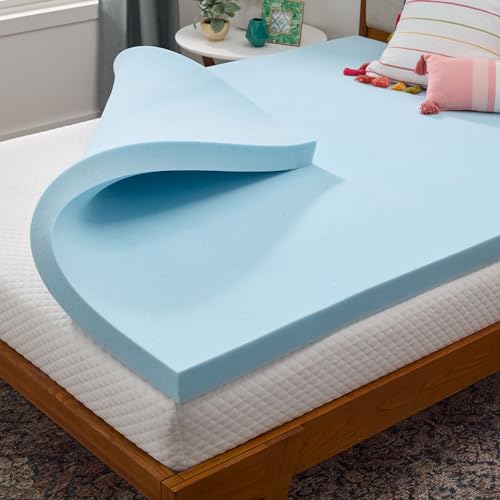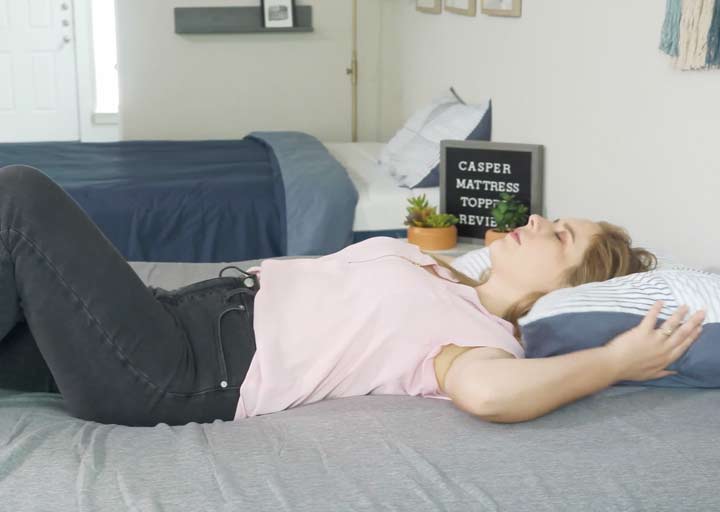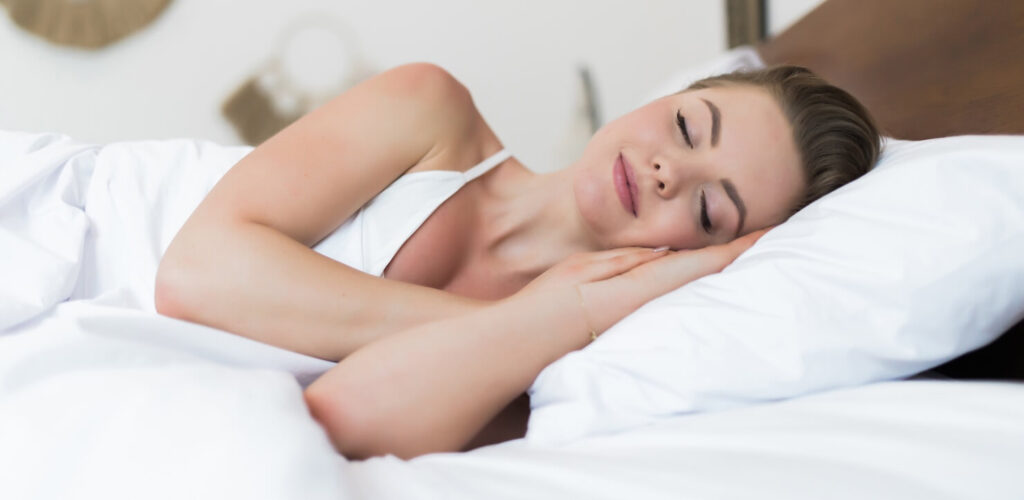When preparing for the arrival of a newborn, there are countless items parents need to consider. One of the often overlooked but essential purchases is a crib mattress protector. Why? Because babies can be messy.
Whether it’s diaper leaks, spit-ups, or accidental spills, a mattress protector acts as the first line of defense, keeping your baby’s crib clean and extending the life of the mattress. But with so many options available, how do you know which one is the best?
In this guide, we’ll explore everything you need to know about choosing the right crib mattress protector, from what features to look for, to some of the best options available in the market. Let’s dive in!
What is a Crib Mattress Protector?
A crib mattress protector is a protective layer that sits on top of the crib mattress, acting as a barrier to shield it from spills, leaks, and other potential damage. It not only helps maintain hygiene by preventing bacteria buildup but also keeps the mattress in prime condition for longer use.
Why Do You Need a Crib Mattress Protector?
Simply put, babies are unpredictable! From middle-of-the-night accidents to day-to-day messes, the crib mattress can quickly become a breeding ground for germs and bacteria. A good crib mattress protector ensures that these spills don’t seep into the mattress itself, offering a more hygienic and comfortable sleeping environment for your baby.
Key Features to Look for in a Crib Mattress Protector
Waterproofing
Perhaps the most crucial feature, a waterproof crib mattress protector prevents any liquid from soaking into the mattress. It’s essential for keeping your baby’s bed clean, dry, and mold-free.
Breathability
While waterproofing is necessary, breathability is equally important. A breathable mattress protector ensures that air can circulate through the fabric, preventing overheating and helping your baby sleep comfortably throughout the night.
Fit and Size
Ensure that the mattress protector fits snugly over the mattress. A loose protector can cause discomfort and safety concerns, as it might bunch up under the baby, creating an uneven surface. Check the dimensions and go for options that offer a secure, tight fit.
Types of Crib Mattress Protectors
Fitted vs. Flat Protectors
Fitted crib mattress protectors wrap around the mattress, much like a fitted sheet, providing a secure hold. Flat protectors, on the other hand, lie on top of the mattress and are held in place by the crib sheets. Both have their benefits, but fitted protectors tend to offer more protection against leaks.
Quilted vs. Non-Quilted Protectors
Quilted protectors often feature a soft, cushioned surface, adding extra comfort for your baby. Non-quilted protectors, while less cushioned, are generally thinner and less bulky, making them easier to fit under snug crib sheets.

Top Materials Used in Crib Mattress Protectors
Cotton
Cotton is a popular material for crib mattress protectors due to its softness and breathability. Organic cotton protectors are also available for parents who prioritize eco-friendly and chemical-free products.
Polyester
Polyester protectors are known for their durability and affordability. While they may not be as breathable as cotton, they offer excellent waterproofing properties, making them a good choice for parents on a budget.
Bamboo
Bamboo crib mattress protectors are a great option for those looking for a more sustainable and eco-friendly choice. Bamboo is naturally hypoallergenic and has excellent moisture-wicking properties, keeping your baby cool and comfortable.
Best Crib Mattress Protectors in 2024
Organic Mattress Protectors
Organic protectors made from materials like organic cotton are gaining popularity. They’re chemical-free and perfect for babies with sensitive skin or allergies.
Budget-Friendly Options
For parents on a budget, there are plenty of affordable yet reliable crib mattress protectors available. These often feature polyester or cotton-polyester blends and provide good protection without breaking the bank.
Luxury Mattress Protectors
Luxury protectors often feature multiple layers, extra cushioning, and superior waterproofing. They’re perfect for parents looking to provide the utmost comfort for their baby, though they come at a higher price.
How to Properly Care for Your Crib Mattress Protector
Washing Instructions
Most crib mattress protectors are machine-washable, but it’s essential to follow the manufacturer’s instructions to avoid damaging the waterproof layer. Use gentle detergents and avoid bleach, which can degrade the material over time.
Drying and Maintenance Tips
Tumble dry on low heat or air-dry the protector to maintain its waterproof properties. Avoid high heat, which can damage the fabric or the waterproof backing.
How to Install a Crib Mattress Protector
Installing a crib mattress protector is simple. If it’s a fitted protector, stretch it over the mattress like a fitted sheet. For flat protectors, place it directly on top of the mattress before putting the crib sheet on.

Benefits of Using a Crib Mattress Protector
Protecting Against Allergens and Dust Mites
A good mattress protector acts as a barrier against dust mites, allergens, and other irritants that could disturb your baby’s sleep.
Preventing Mold and Mildew Growth
Waterproof protectors prevent liquids from seeping into the mattress, reducing the risk of mold and mildew growth, which can be harmful to your baby’s health.
How Long Should a Crib Mattress Protector Last?
With proper care, a crib mattress protector can last anywhere from one to three years. However, if you notice any wear and tear, such as cracks in the waterproof layer, it’s time to replace it.
Are Crib Mattress Protectors Safe for Newborns?
Yes, crib mattress protectors are safe for newborns, provided they fit snugly and don’t bunch up. Always ensure that the protector is properly secured to avoid any safety risks.
The Environmental Impact of Mattress Protectors
Some mattress protectors, particularly those made from synthetic materials, may have a higher environmental impact. Look for eco-friendly options like organic cotton or bamboo if sustainability is important to you.
Crib Mattress Protectors vs. Pads: What’s the Difference?
While both protectors and pads offer protection, crib mattress protectors are designed to cover the entire mattress, whereas pads often provide localized protection, such as in the center of the crib.
Common Mistakes to Avoid When Using a Crib Mattress Protector
Avoid using a protector that is too small or too loose, as this can compromise your baby’s safety. Also, never place an unwashed protector directly on the mattress without ensuring it’s clean and hygienic.
Conclusion: Final Thoughts on Choosing the Best Crib Mattress Protector
Choosing the best crib mattress protector is about balancing your needs for waterproofing, breathability, and comfort. Whether you’re looking for an organic option or something more budget-friendly, the right mattress protector will help keep your baby’s crib clean and cozy, ensuring a healthier sleep environment.
FAQs
- How often should I wash my crib mattress protector?
It’s recommended to wash the protector every two weeks or whenever it becomes soiled. - Can crib mattress protectors cause overheating?
Not if you choose a breathable protector that allows airflow, like those made from cotton or bamboo. - Are there hypoallergenic crib mattress protectors available?
Yes, many protectors, particularly those made from organic materials, are hypoallergenic. - Can I use a crib mattress protector with a newborn?
Absolutely! Just ensure it fits securely to avoid any bunching or discomfort. - Do all crib mattress protectors fit standard-sized mattresses?
Most do, but always check the product specifications to ensure the best fit.



